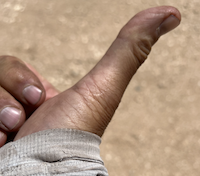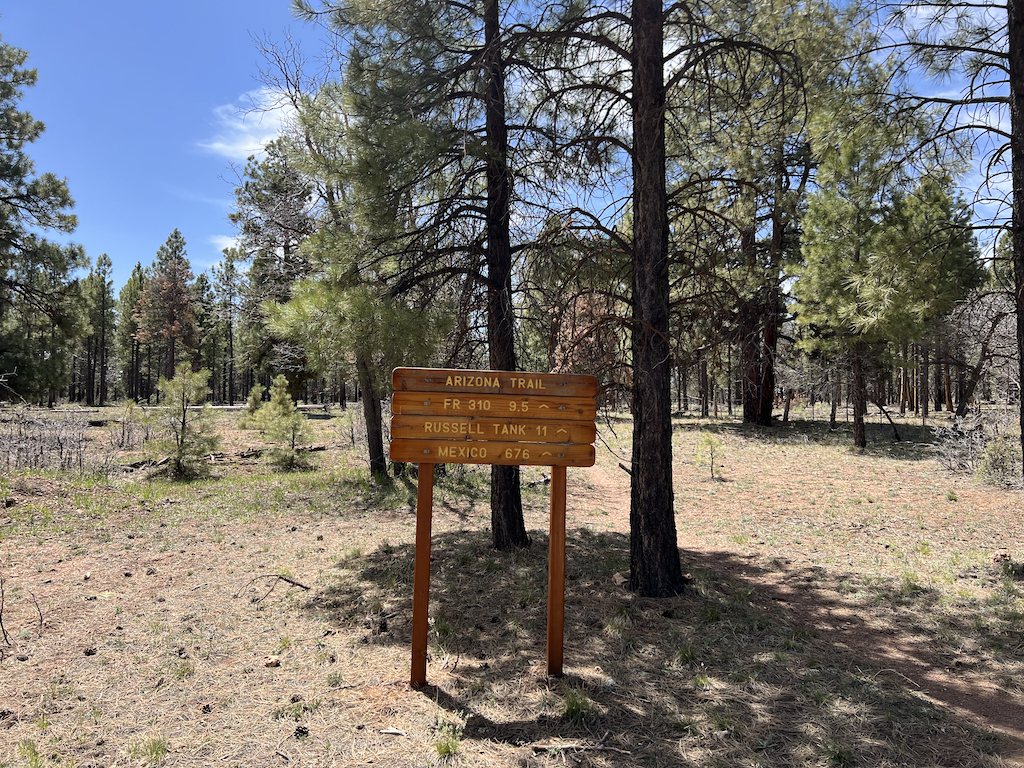
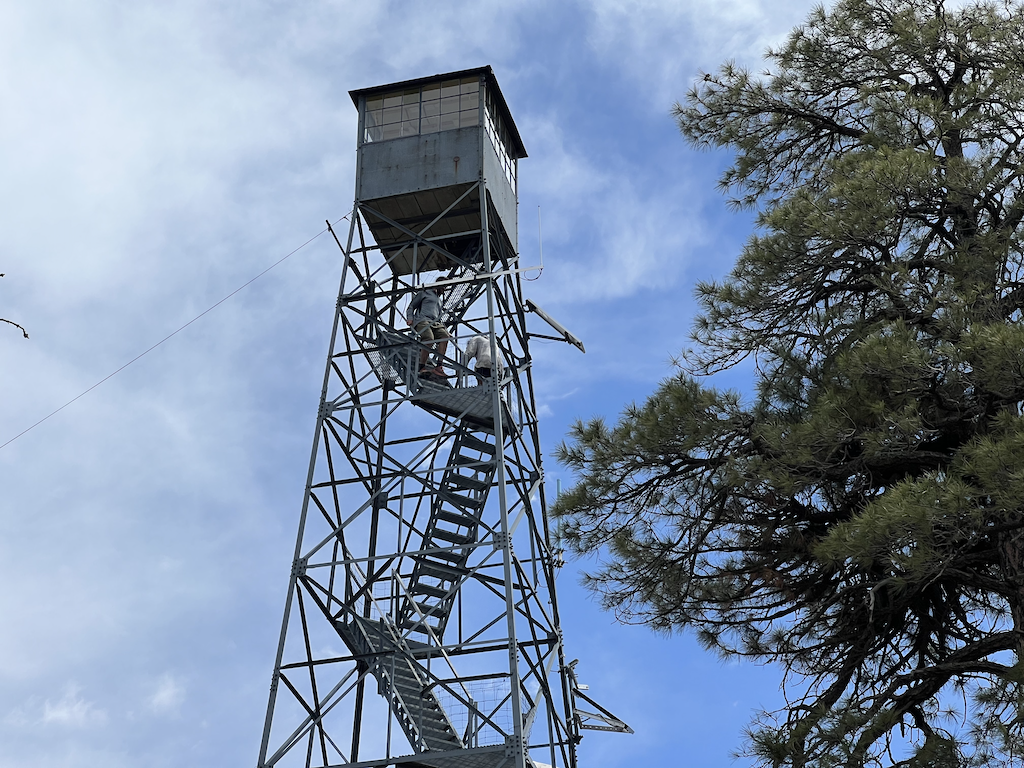
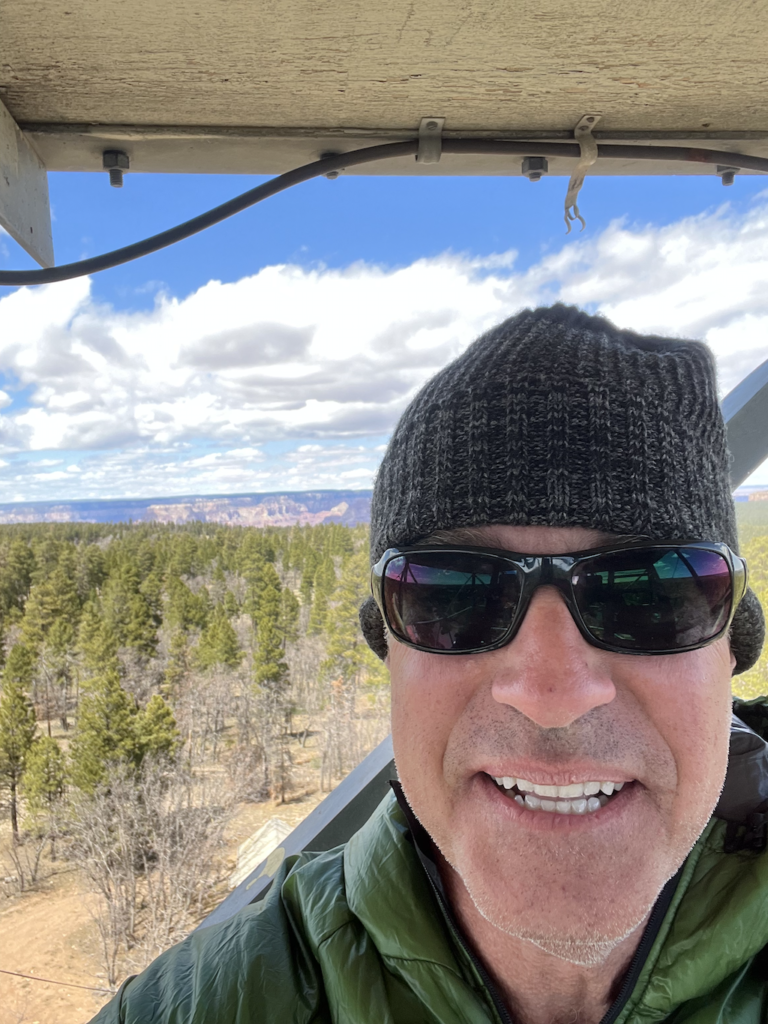
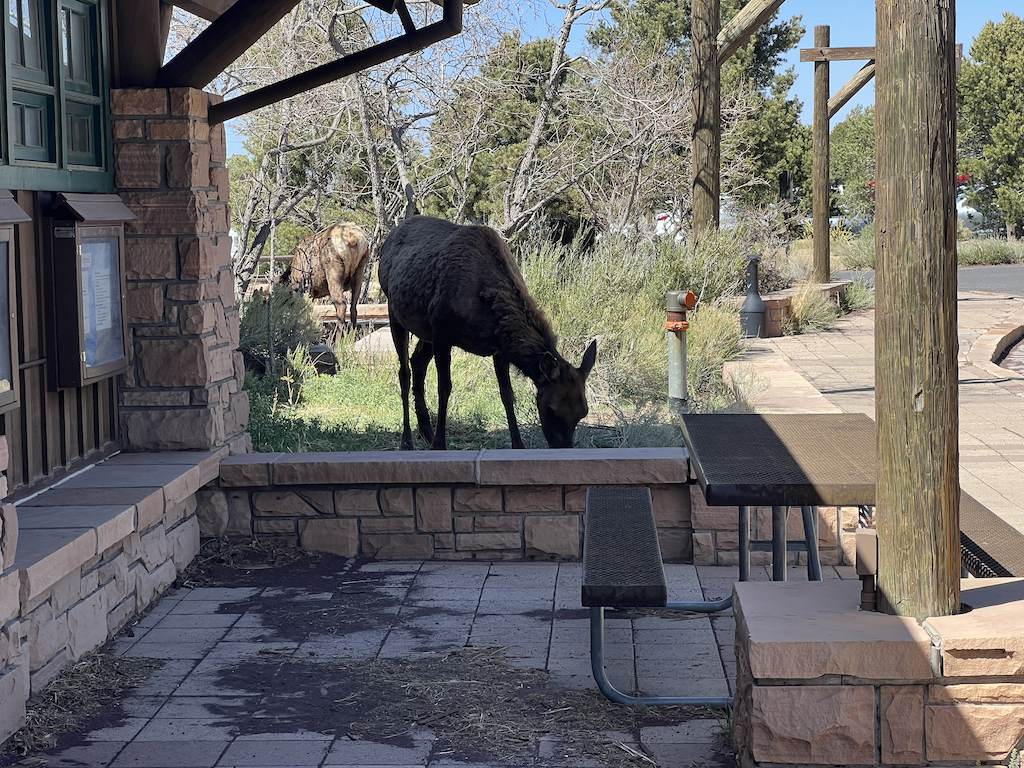
The Grand Canyon is breathtaking, and the experience of hiking from rim to rim was memorable. In 2021, the Grand Canyon had 4,550,921 visitors, and less than 1% of visitors descended to the Colorado River. The hike is not easy.
The Grand Canyon was a highlight of the AZT for me. The vastness, beauty, and challenge will remain with me forever. The NPS helps AZT hikers by accommodating our schedules, and the park provides a welcome relief with showers, food, and laundry facilities.
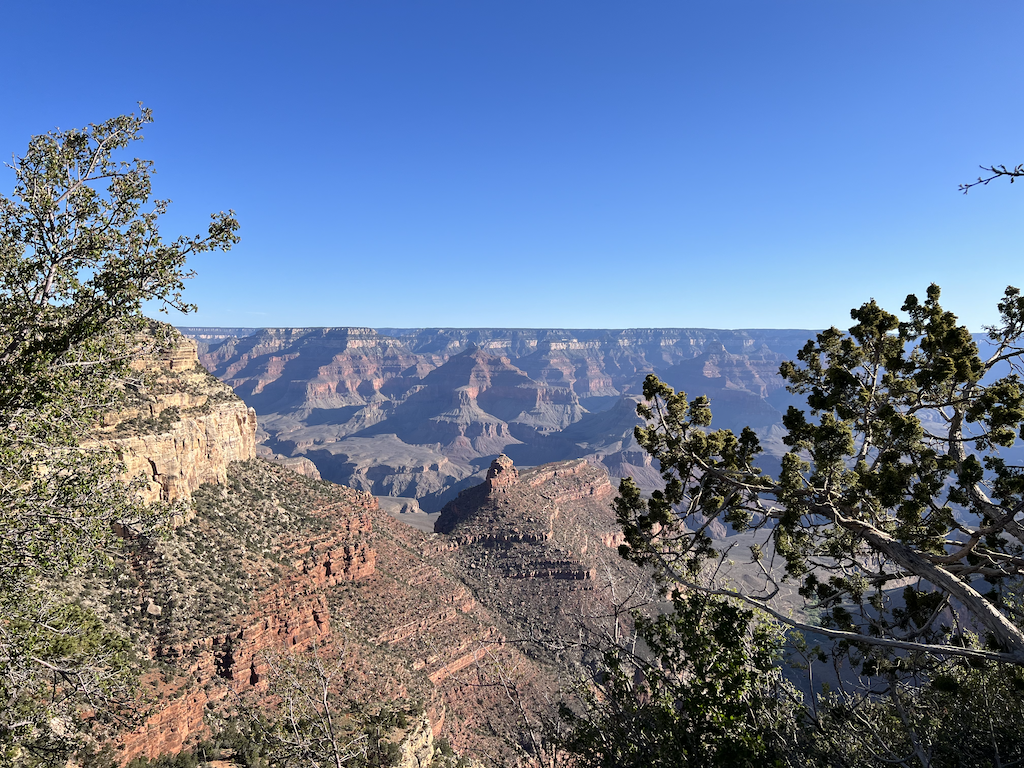
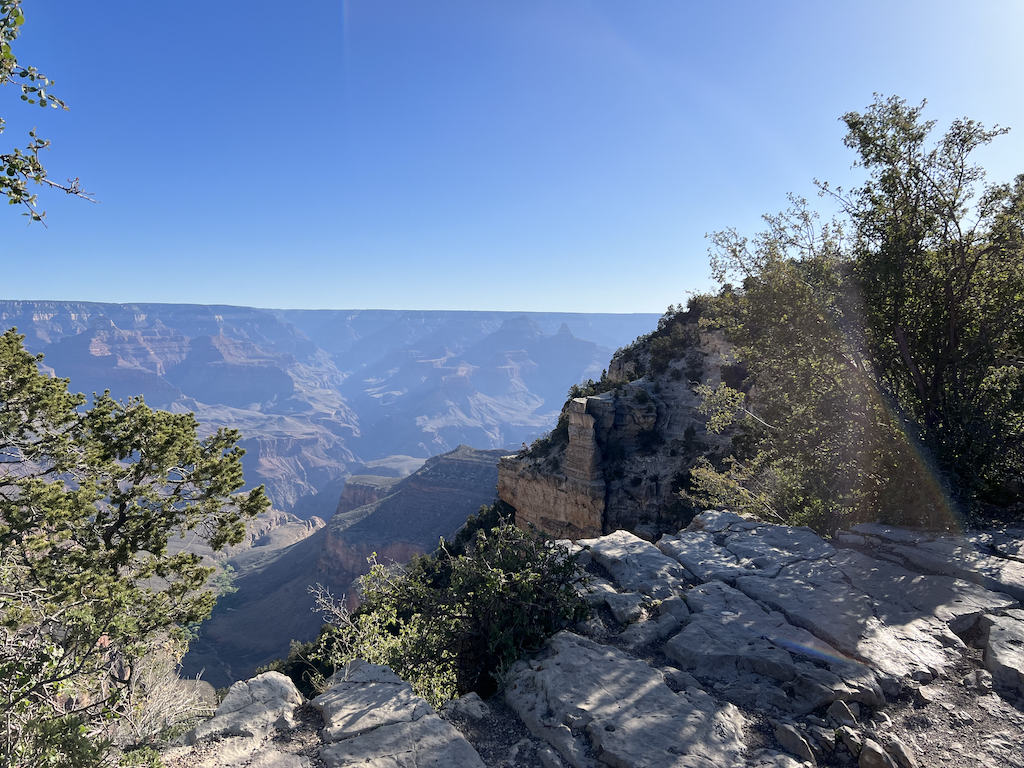
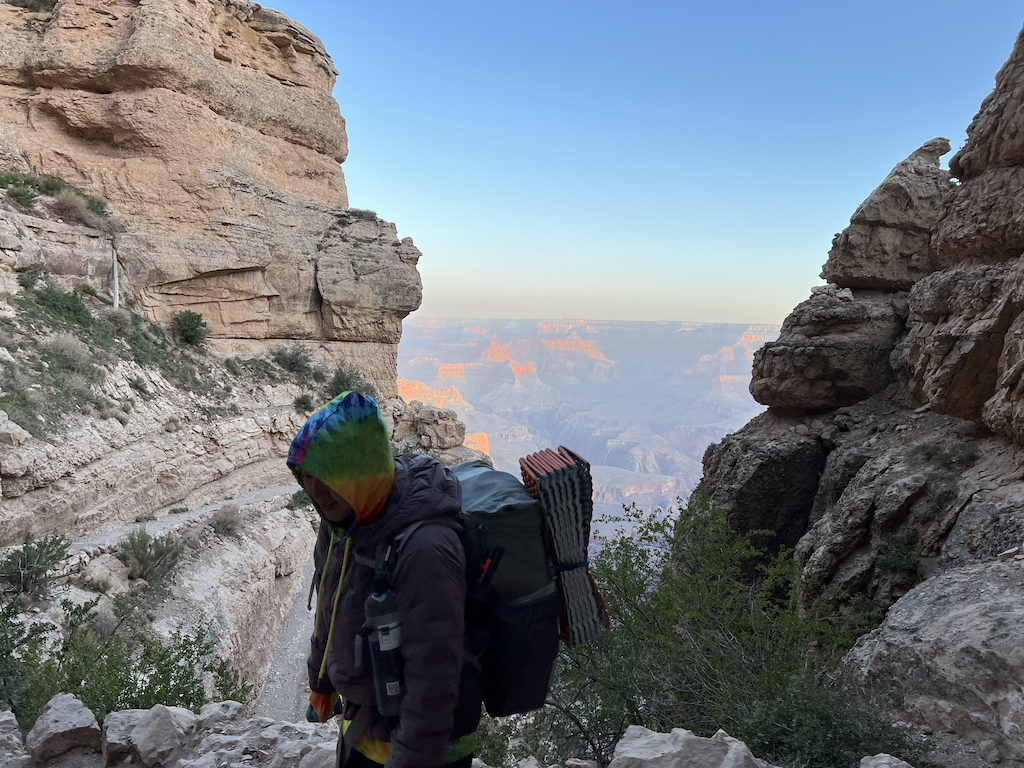
I started the descent at around 07:00 on the South Kaibab Trail (6.8 miles) with Kharen, Viet, and Kharen’s friends Sam and Melissa, who are also nurses in Flagstaff. Sam and Melissa wanted to hike down with us and then we would split up at Phantom Ranch and they would hike up the Bright Angel Trail. The South Kaibab TH is at 7,260 feet in elevation, and Phantom Ranch (rest point) is at 2,546 feet. The North Kaibab TH is at 8,241 feet. Most people stay at Bright Angel Campground near Phantom Ranch or Cottonwood Campground on the North Kaibab Trail. Kharen, Viet, and I made a plan and decided that going to Cottonwood would knock out almost 2,000 feet of ascent and make getting to the north rim easier, so we got permits to camp at Cottonwood.
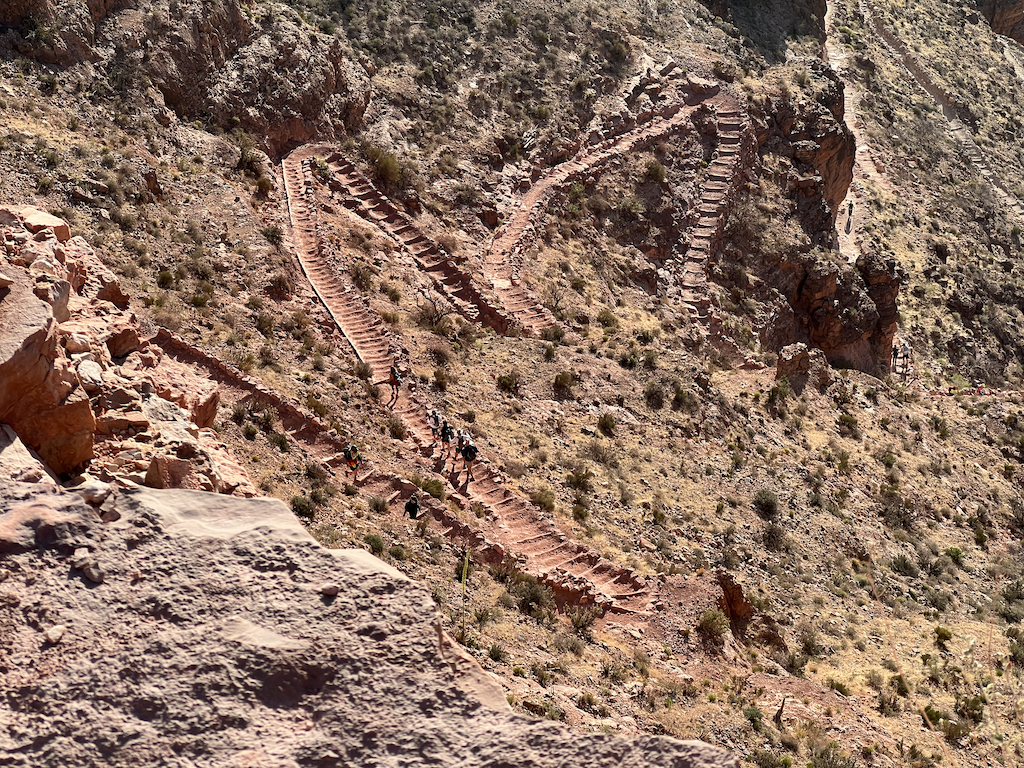
My poor descending technique caught me going down the South Kaibab Trail. I fought gravity the entire way, and to my chagrin, gravity won. Resisting gravity as I descended destroyed my quads. About half a mile from the bridge over the Colorado River, my quadriceps stopped working. When I would take a stride down, I could not straighten up and had to sit on the step, rest, and stand up. Quadriceps failing has never happened to me. I never experienced cramps and had snacks and water on the way down, but making 10,000 forward lunges in a few hours took its toll on my legs. Once I got to the river, I had some LiquidIV electrolyte drink, which contains some sugar. That restored my quads to working order, and I took a long break with my hiking partners at Phantom Ranch, having a bagel and two ice-cold lemonades.
I had plenty of time to think and recall what Josh had said about trail running. That was, trail runners run down descents and let gravity do the work.
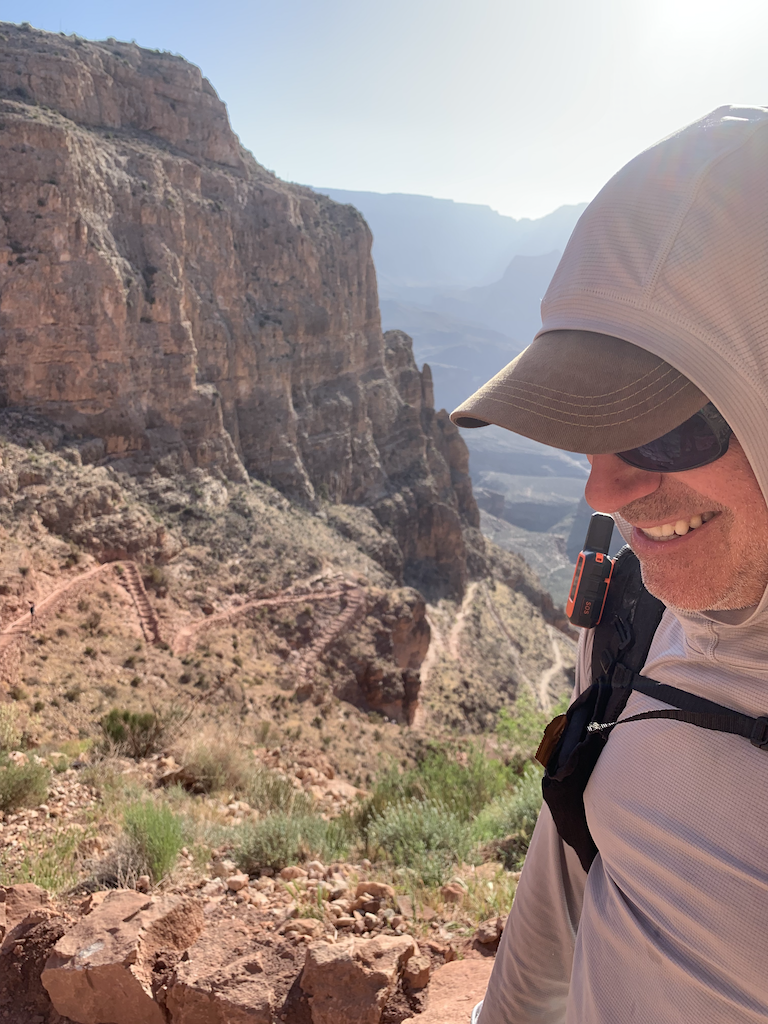
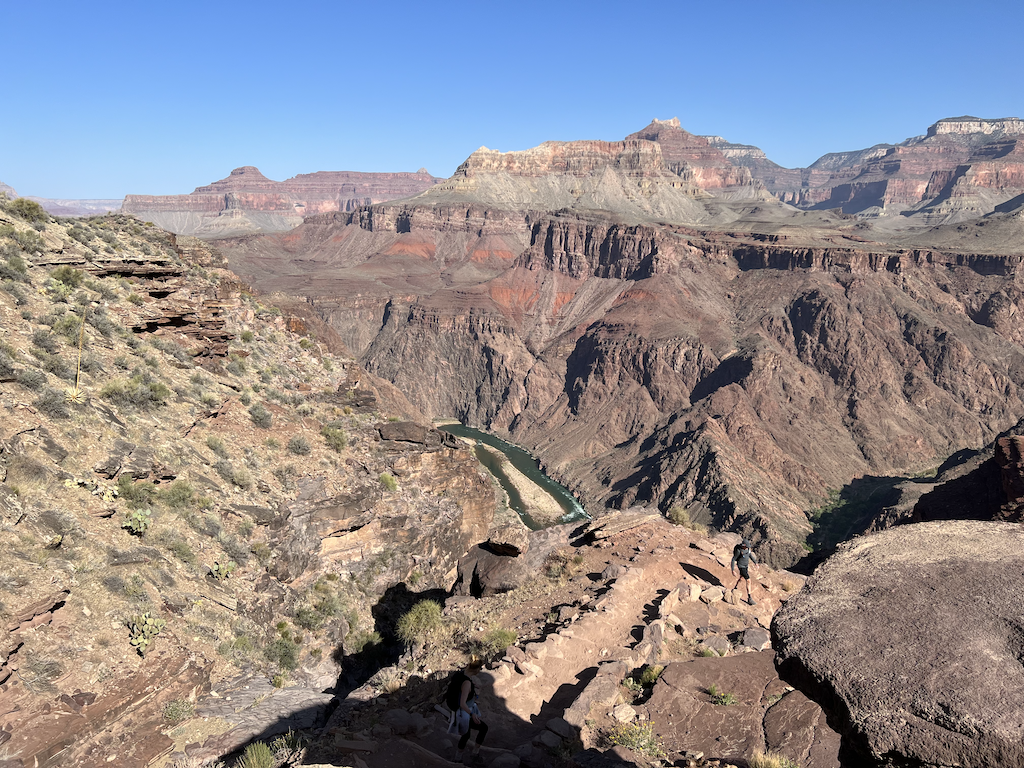
Phantom Ranch is known for its excellent lemonade. When I spoke to a ranger at the Backcountry Office, I mentioned this, and he said that the lemonade is nothing special since it is Country Time powder because mule teams must pack in everything at Phantom Ranch. Some people think it’s the best lemonade because they are hot and tired. I certainly was. However, I felt great on the hike from Phantom Ranch to Cottonwood Campground (6.8 miles and 1,534 feet of elevation gain.) This hike to Cottonwood includes going through “The Box,” a notoriously hot and dry section.
Weird. My body let me down, but I recovered quickly. The next day my quads were a little sore, but I hiked up to the North Kaibab TH (6.8 miles and 4,161 feet of elevation gain) in less than 3 hours.
On the South Kaibab Trail, we did see a woman having problems hiking up the trail. She was trying to ascend and get back to her car. She refused water and food from other hikers and had spent the night in the only shelter on the North Kaibab Trail. She had descended the previous day with her fiancé. He left her and was hiking up the trail to get help from the NPS. I listened, as did Kharen, Melissa, and Sam, as she spoke with the NPS. She was expecting to get taken out, but that is not how it works.
There is a saying that hiking down to the river is your option, but hiking out is required. You choose to hike down, but you must hike out. Numerous signs warn you, and there are pre-SAR (pre-search and rescue) people at the top of the canyon that ask how you are prepared and urge people not to hike down if they are not ready. Unfortunately, they cannot prevent anyone from walking to the river.
This person was in a sundress, carried 12 oz of water, and wore sandals. The ranger told her he would dispatch a ranger from Indian Garden Campground on the Bright Angel Trail to escort her back down the South Kaibab Trail and up the Bright Angel Trail. (The Bright Angel has less slope, more shade, and more water sources along the trail, but it is longer.) This person sounded like she didn’t want to take another step. Rescues like this happen daily. People get so excited to be in the Grand Canyon, they become unaware of the dangers.
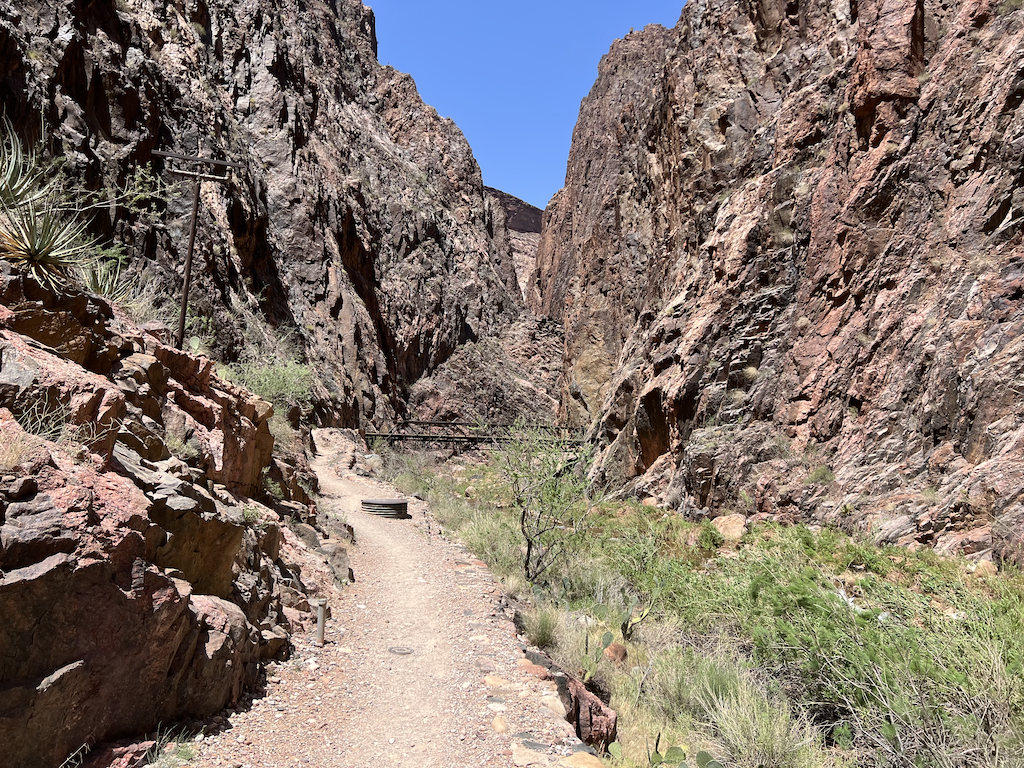

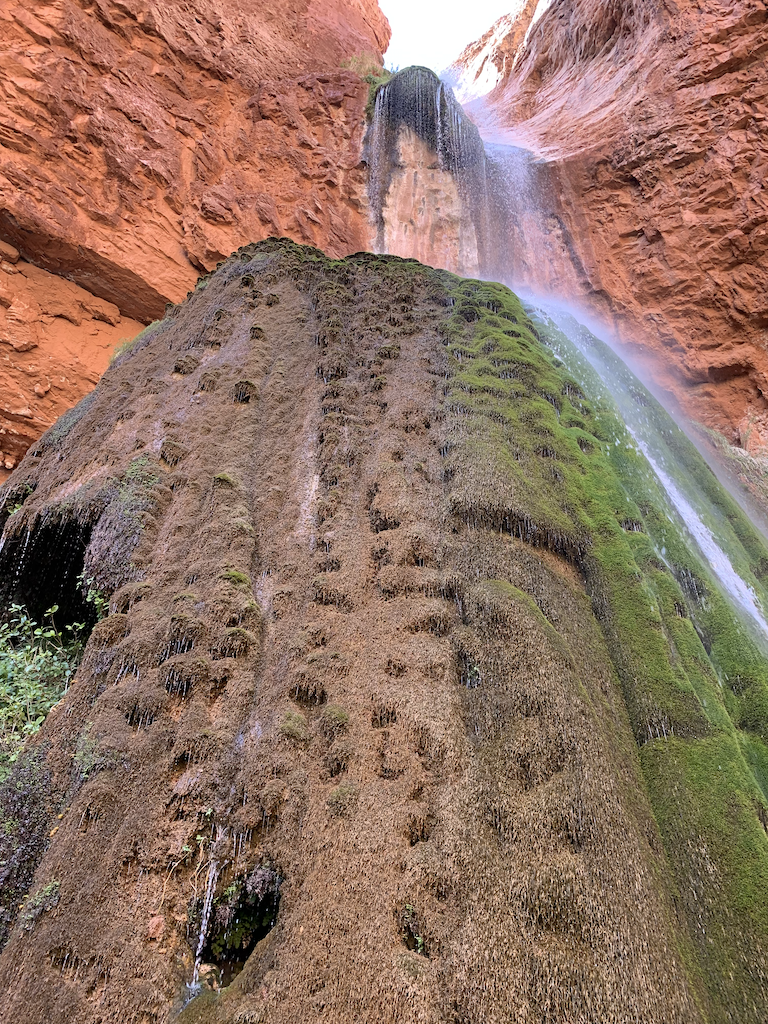
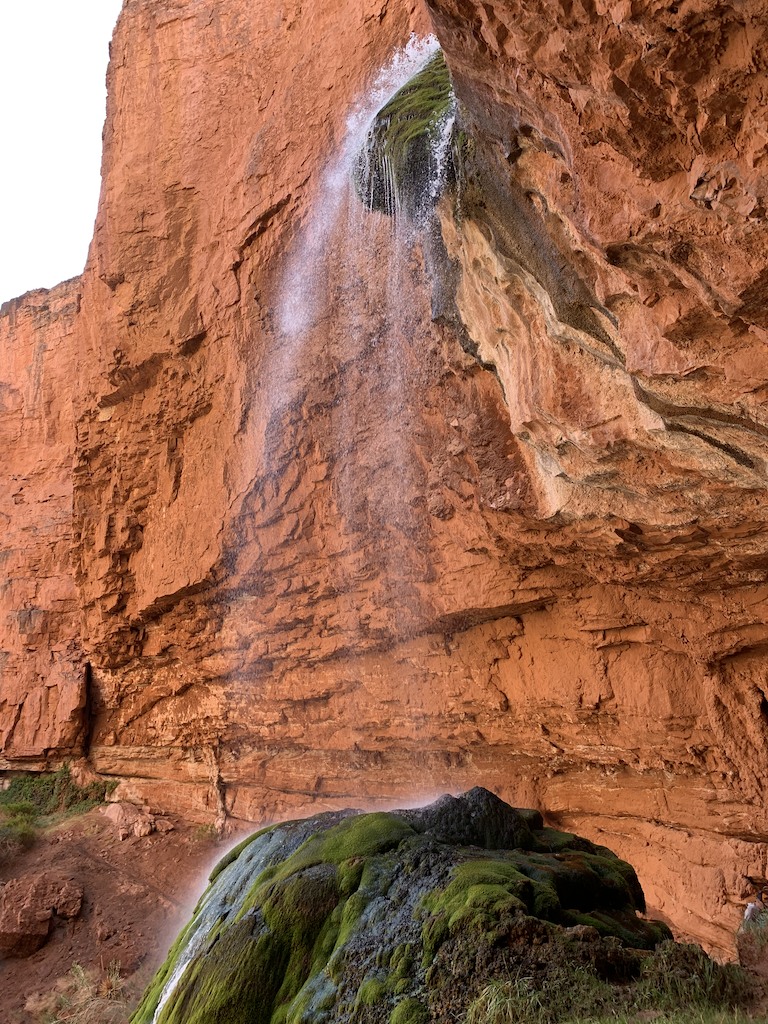
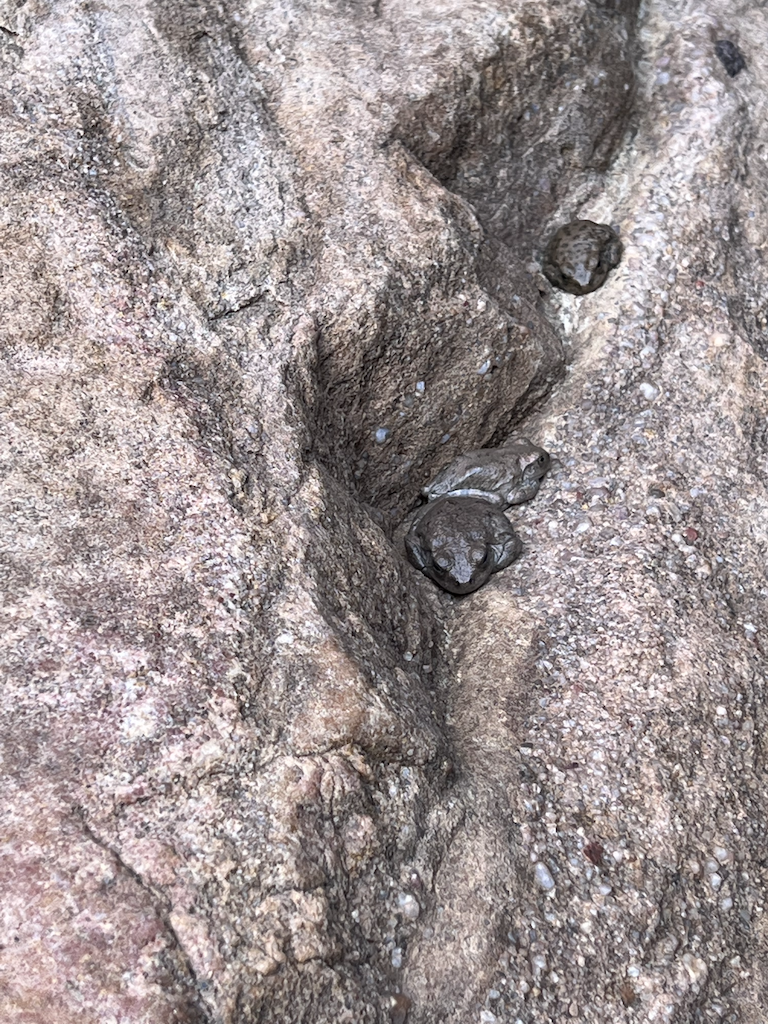
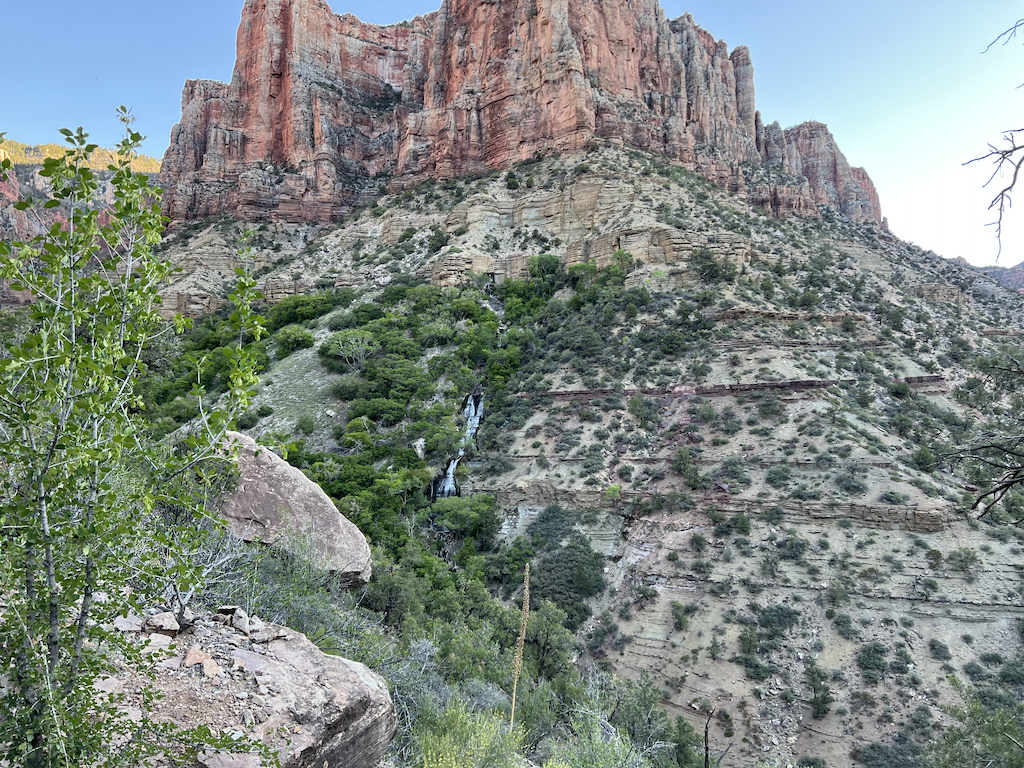
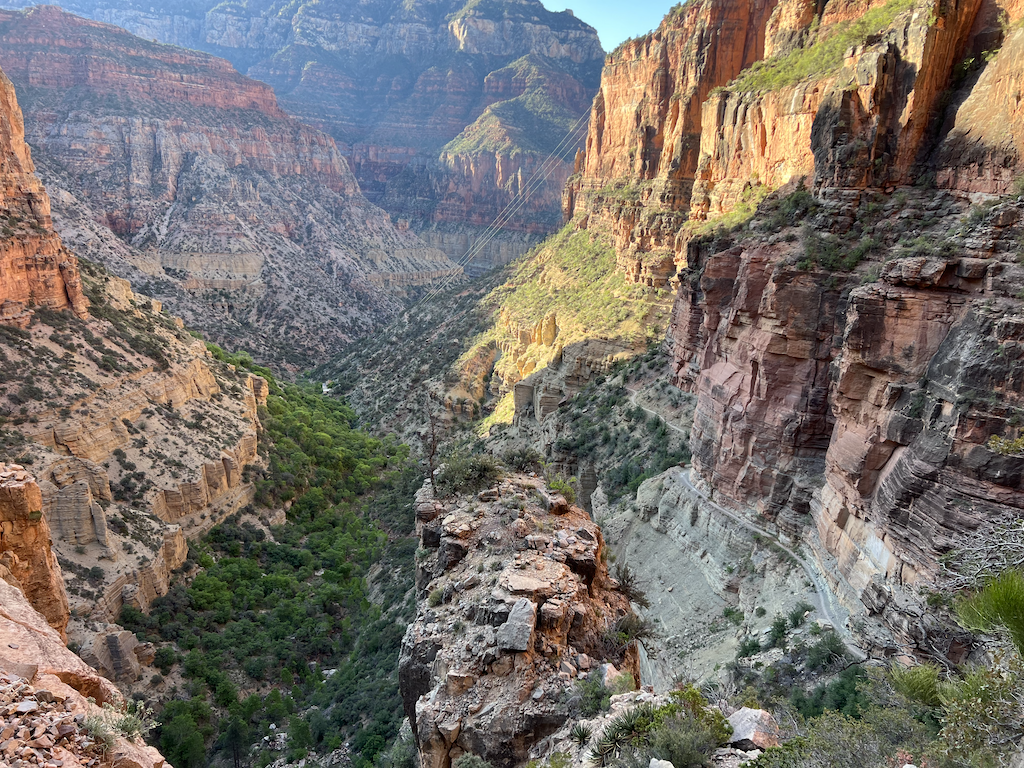
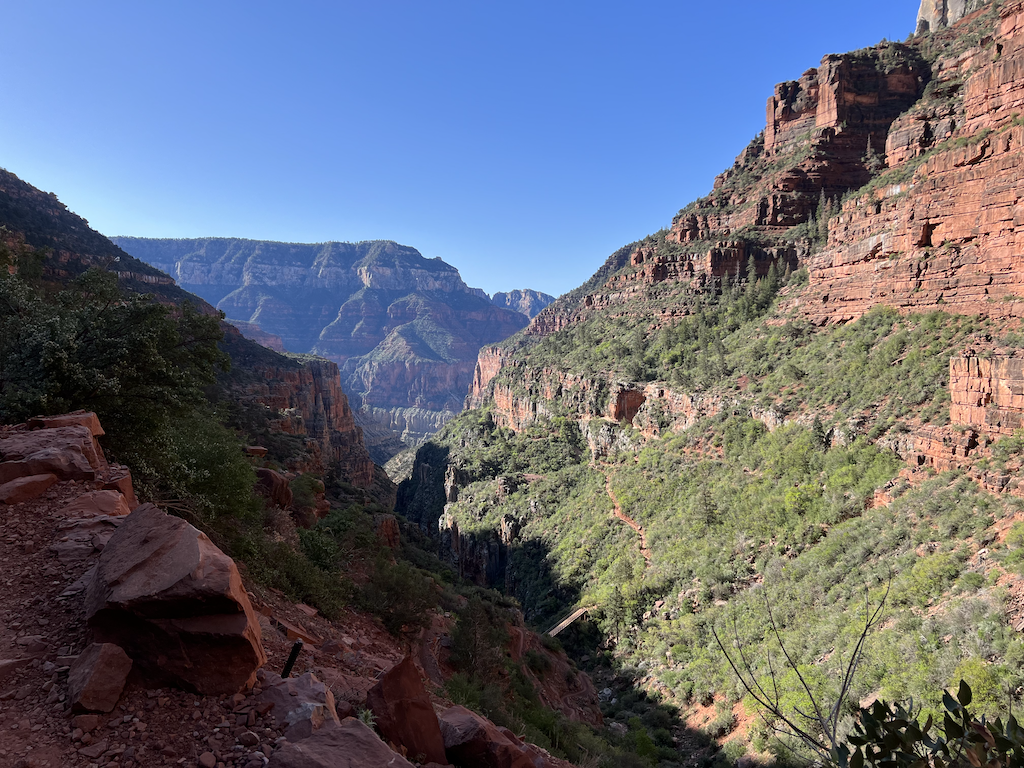
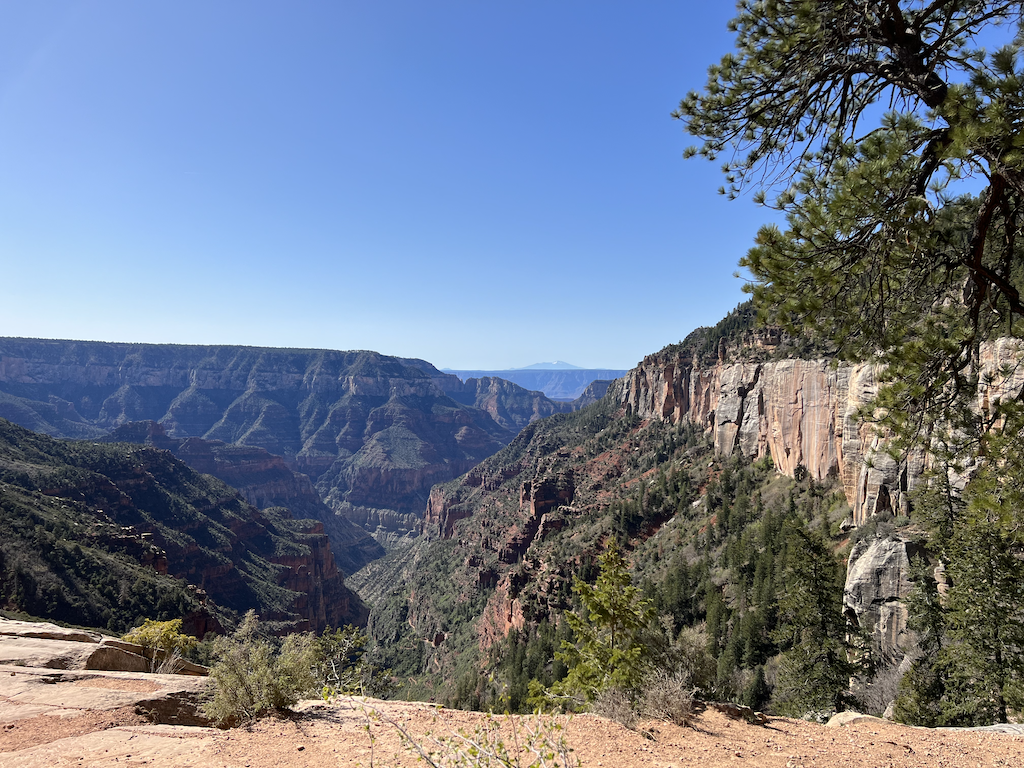
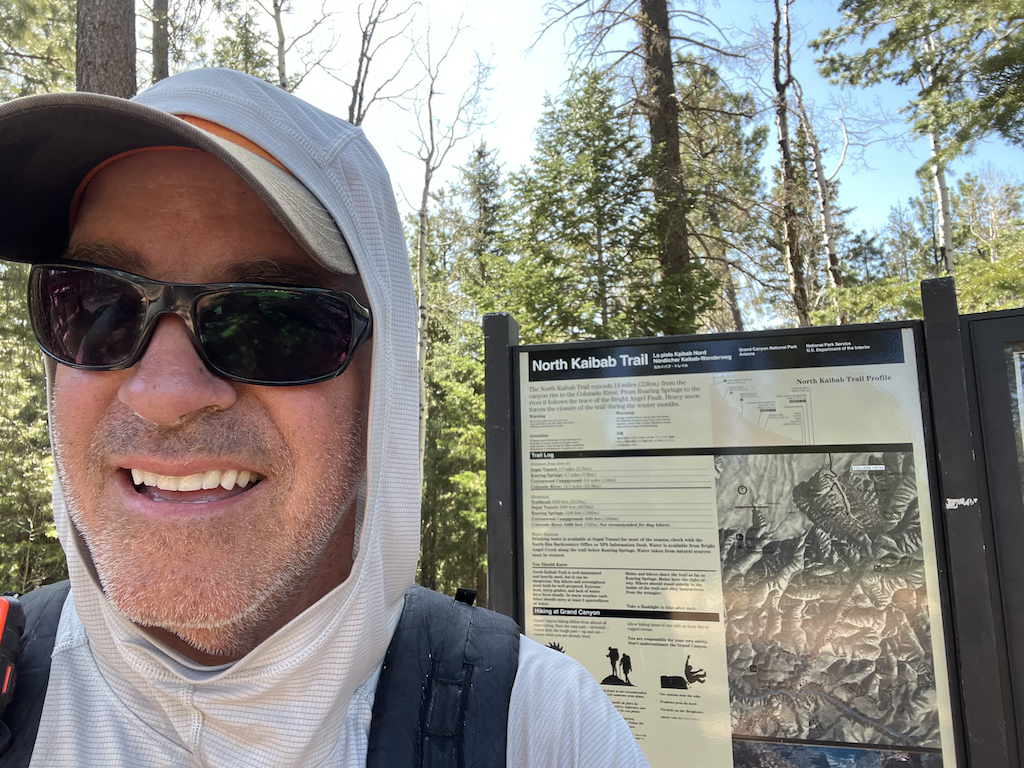
Going rim-to-rim is an accomplishment and is sometimes emotional. Kharen, Viet, and I did it. We went to the North Rim ranger station and had lunch, gloating about how badass we were. We also reflected on the number of trail acquaintances ahead and behind us. Each of us thought that the Grand Canyon is one of the best, if not the best experiences of the AZT.
After the Grand Canyon, the trail is primarily flat and parallels the road into the National Park. The road was closed until May 15 since the state does not maintain the road in the winter. As a result, AZT hikers and runners doing a rim-to-rim run do not have to deal with tourists.
Kharen, Viet, and I hiked out of the park and camped about ten miles from the park entrance. We decided to walk the road because it had better water sources than the parallel trail. When we stopped for a morning break, I suggested that if any cars came down the road heading towards Jakob Lake that we try to hitch. The weather was cold and windy, and after the Grand Canyon, the scenery was a letdown, which helped persuade Kharen and Viet to agree.
Miraculously, an hour later, we got about a twenty-mile hitch to Jacob Lake, my last resupply stop and about two days from the Stateline Campground. Since the road was closed, there was not much traffic, but a SAR person helping to open the National Park on the north rim picked us up. We got food at the restaurant, and I resupplied before walking a few miles back to the trail. The next day we finished the AZT and got a ride to Page, AZ.
Next: Trail Towns
